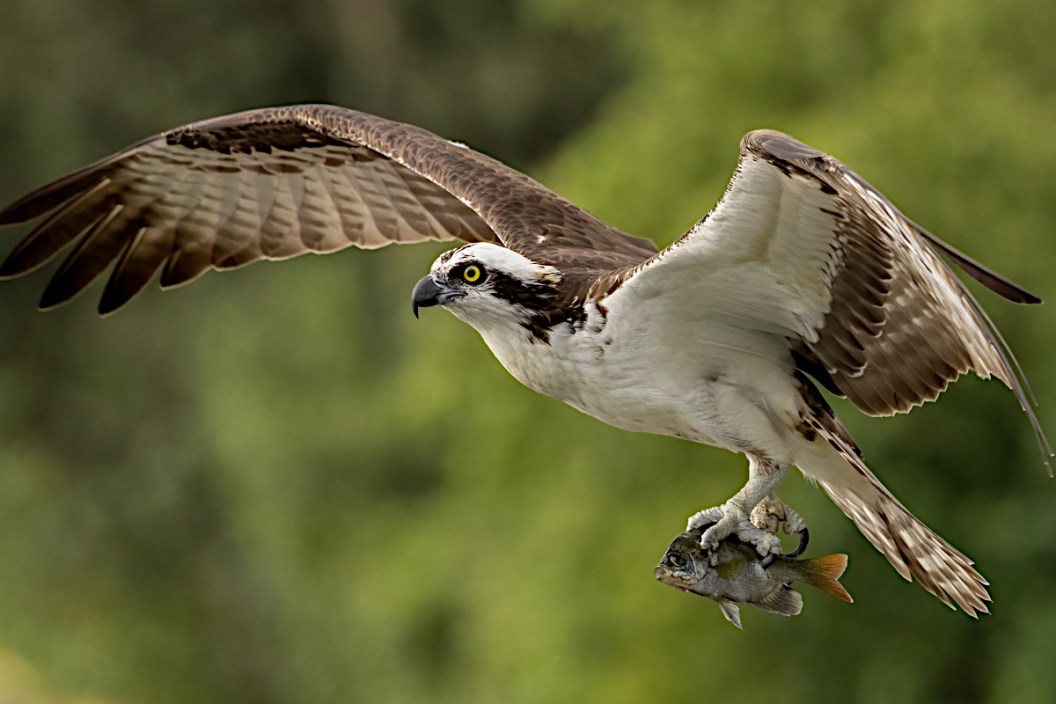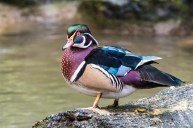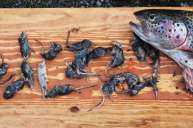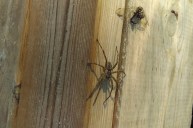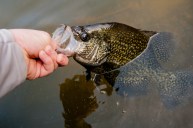The osprey is one of our favorite hunters. Here's more about this amazing bird of prey.
If you stop in on any outdoor social media page, chance are you'll find pictures of a North American osprey hunting somewhere. These supreme flyers are one of the most successful and aggressive fish hunters known to man, and they rarely fail. It really doesn't matter if you consider them more of a hunter or fisherman since they can be called both.
You may have seen their amazing nesting platforms on the top of channel markers, utility poles, or even in the tops of unused duck blinds. You may have also seen the way they soar above the water, patiently waiting for some unsuspecting fish to get too close to the surface.
Ospreys are raptors with razor-sharp talons that can dive right through the water to snatch fish, swim back to the top, and then fly away like they never even got wet. They are the subject of photographers, videographers, and everyday bird watchers, but we love them because they are such good hunters.
Osprey Identification
Ospreys are smaller than our national bird, the bald eagle, but larger than a red-tailed hawk. We peeked to see what All About Birds had to say: "Ospreys are brown above and white below, and overall they are whiter than most raptors." They are actually quite easily identifiable in the wild due to their sleeker body style and many times due to the brown stripe that goes through their eye around the white of their head.
In the air they have a very distinctive shape from other hawks with their long, narrow wings and kink in their flight pattern that looks a bit like the letter M. Their long, sharp talons and curved beak make them look as tough as any bird of prey we watch, and they are.
Overall, they have much more white in their feathers than most other raptors and are easy to spot in the air.
Lifecycle
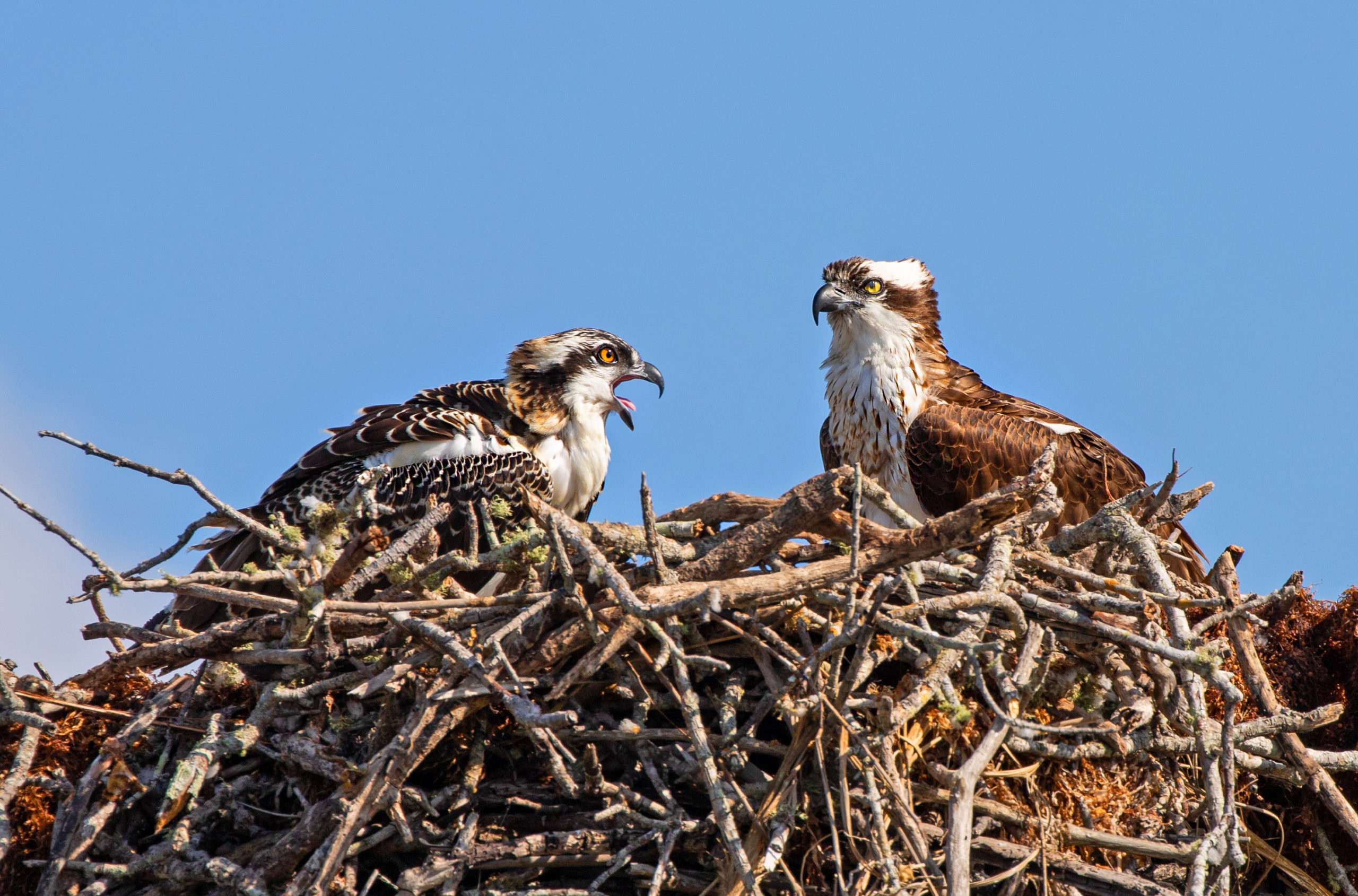
Getty Images: Aschen
These American birds visit the the furthest part of the continent to breed from Alaska across the Canadian wilderness. They also migrate incredible distances logging well over 100,000 miles of its lifespan to places like Mexico, Central America, and even as far as South America.
Osprey nests are some of the most visible yet unapproachable bird nests there are. They are made from large sticks and lined with everything from sod, grasses, vines, algae to whatever the nesting pair chooses.
A pair of osprey may use the same nest site for years gradually making it larger and larger until they become over 10 feet in diameter. Some people may mistake these stick nests as those belonging to larger birds of prey like an eagle until they see an osprey land on it.
The female bird generally lays two to four eggs in a clutch which incubate for almost 40 days before hatching. The chicks stay in the nest with their parents and have fresh fish brought to them until they fledge and can fly on their own.
Habitat
These birds can live, feed, and breed in a wide variety of aquatic regions, but are somewhat limited to areas that are shallower. This is due to the fact they cannot dive more than about three feet. Any slow moving rivers, lakes, reservoirs, lagoons, swamps, and marshes that they can find fish are likely bets to have some osprey population. In fact, the only place you will not find them is Antarctica.
This fish hawk can be found year round in parts of Florida all the way to California. They overwinter in regions like the Gulf Coast where the shallow water hunting is best. Since this bird can well adapt to so many different areas, it can be seen across broad swaths of the eastern, interior, and western U.S.
Feeding

Getty Images: Denja1
This is the only hawk that feeds almost exclusively on fresh fish. Whether freshwater species or saltwater fish, if the osprey can locate and target them, it will. It mainly goes after fish in the 10 to 15-inch range, but the osprey's diet has been known to include some bigger prey.
Ospreys dive onto their targets in a feet-first pattern with "a reversible outer toe that allows them to grasp with two toes in front and two behind." Interestingly enough, the osprey flies with its catch headfirst to reduce the wind resistance while flying.
At times, they disappear almost completely under the water, but upon returning to the surface, they have a special adaptation in their wings that allows them to beat their wings forward and around the water's surface to gain elevation after grabbing a fish.
Why We Love the Osprey
Ospreys have excellent success as fishing birds. It is said that they usually catch a fish on one out of every four dives, and sometimes have a 70-percent catch rate. "The average time they spent hunting before making a catch was about 12 minutes."
We love to root for the natural hunters and fishermen we see in nature, whether it be a lion, grizzly bear, or an osprey. Watching these birds be so successful gives us a boost of energy during the summer months when we can only be spectators to the hunt.
The word "osprey" dates back to the Medieval Latin for "bird of prey" and is the given name for our military's own V-22 Osprey vertical takeoff and landing aircraft.
The wild osprey has come a long way since the days when the pesticide DDT was used around the country and nestlings began to disappear. As a bird species, the osprey (pandion haliaetus) may have a long wingspan and a white head, but this large raptor can catch slippery fish with its feet, and we can't do that.
Products featured on Wide Open Spaces are independently selected by our editors. However, when you buy something through our links, we may earn a commission.
Looking for a new way to display those antler sheds? Go to Rack Hub and use the coupon code Craiger. Be sure to follow my webpage, or on Facebook and YouTube.
NEXT: FISHING FOR MAHI MAHI: PROFILING THE FISH AND EXPLAINING HOW TO CATCH THEM
WATCH
